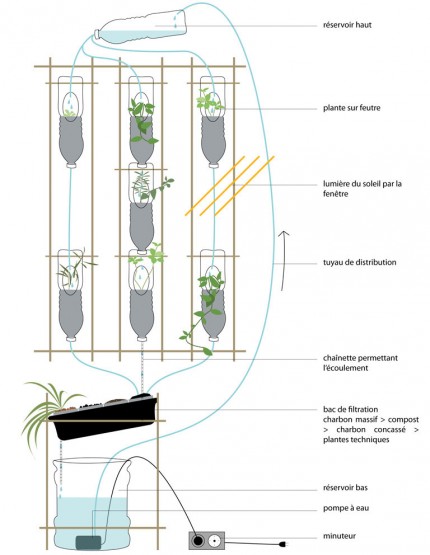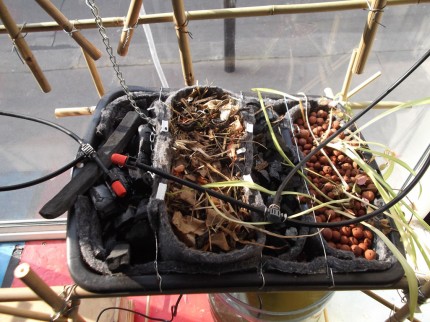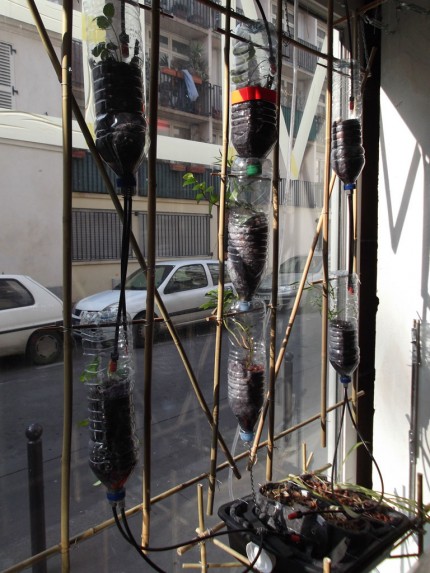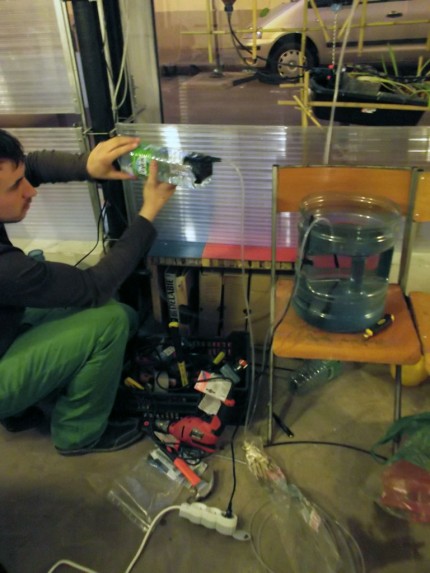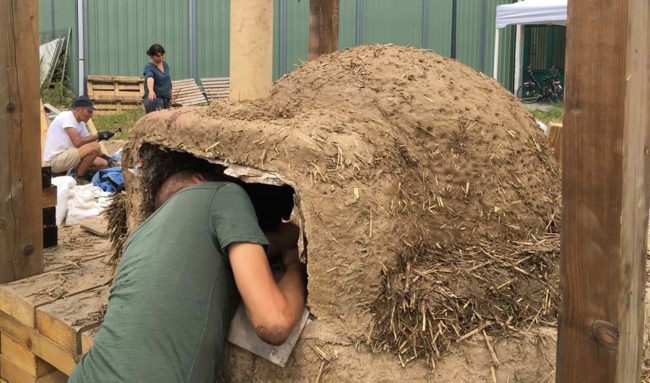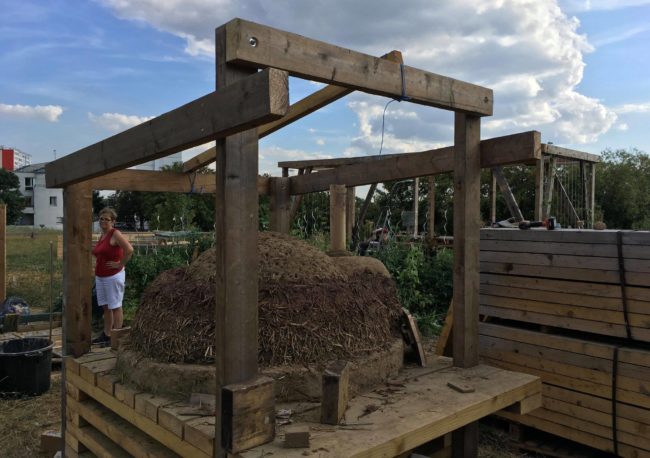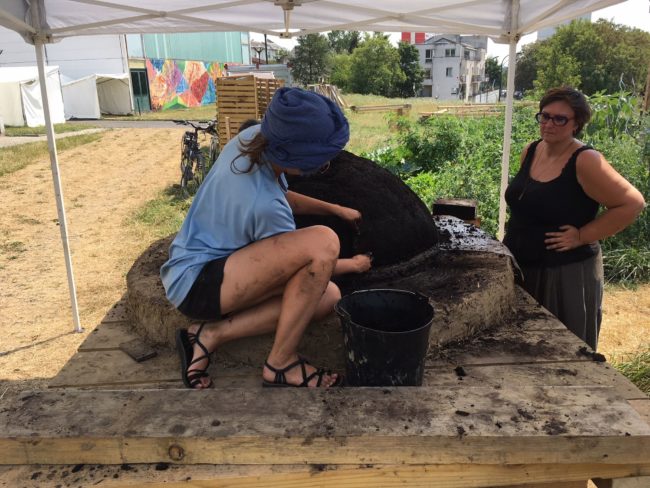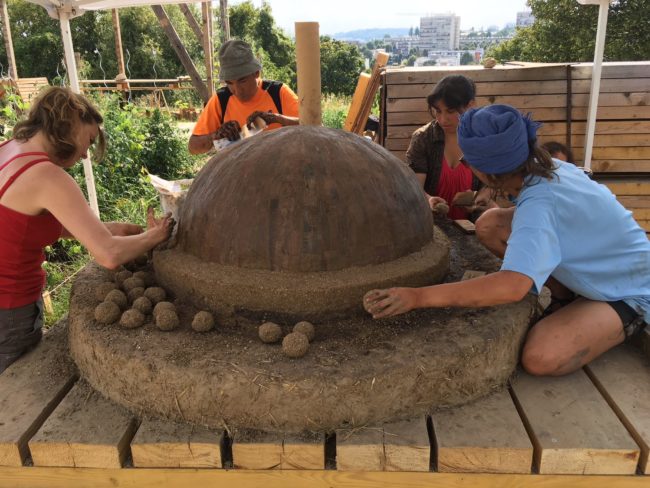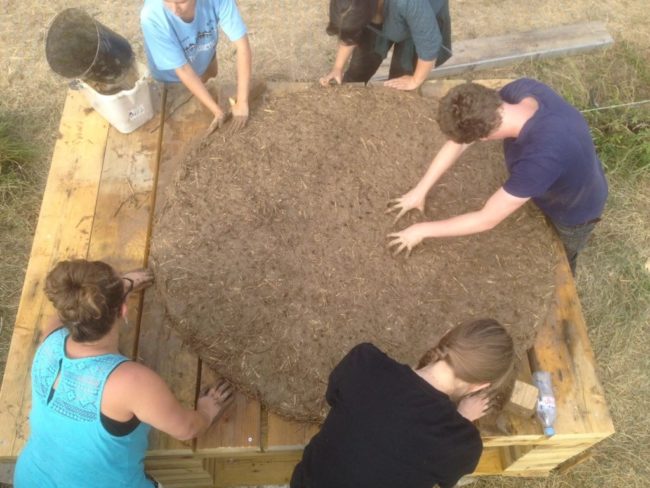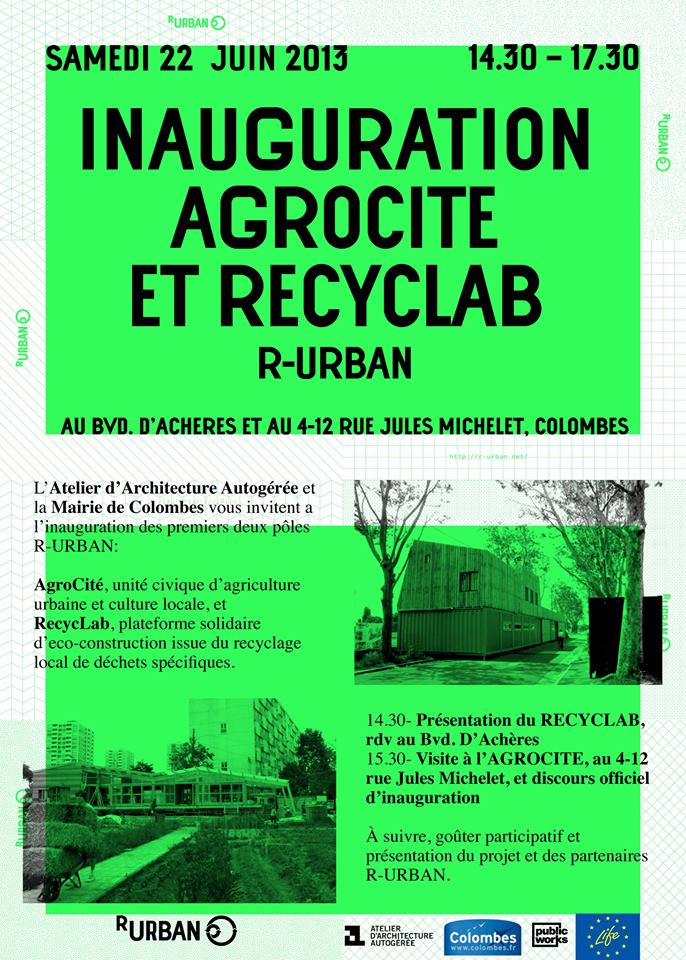A great moment of suspense Wednesday, August 1 during the ultimate test: the removal of the soil that held until then the vault of the bread and pizza oven! The month of participatory construction has proved itself: the dome of the oven is absolutely solid!
Construction of a bread and pizza oven at the Agrocité of Bagneux
Workshop “traditional knowledge”: tricot (knitting)/ first lesson
R-URBAN ARTISTS IN RESIDENCE 05 / DANIELA DOSSI
“What does ‘knitting’ mean ?”
This was the first question the course leader Lyne asked to the group during the first lesson of atelier tricot. On Sunday October 6th about 10 participants took part in the Atelier Tricot for beginners at Agrocite. Different yarns (wool and cotton) and needles n.4 were available as materials to be explored. During the first lesson Lyne explained the basic steps for knitting and showed the point mousse as starting technique.
Here the first outcomes:

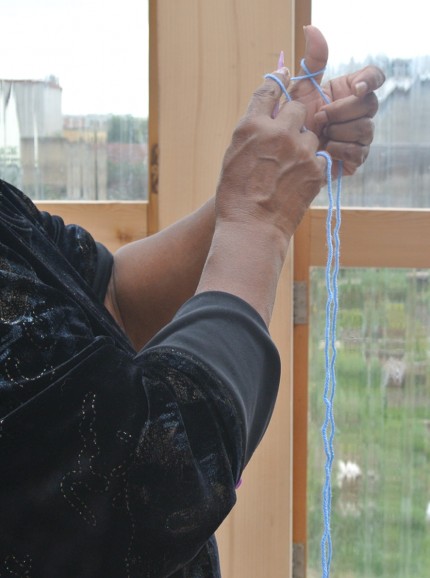
Pictures: course leader Lyne explains the basics for knitting.
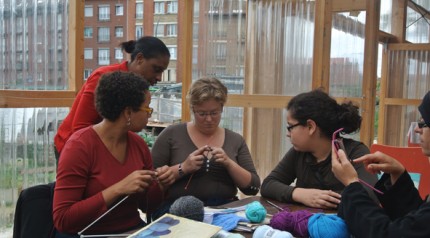
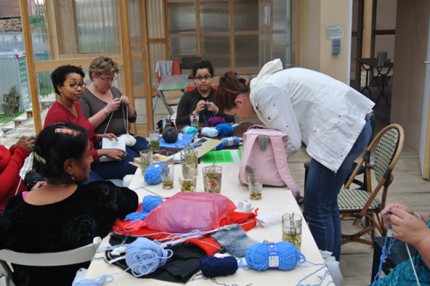
Participants learn how to knit while enjoying a nice herbal tea from the garden!
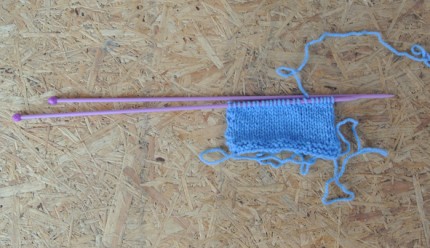
A baby scarf made by one of the participants.
The second lesson will take place on Sunday November 3rd at 15:00, if you would like to join please communicate your name to Lyne at Agrocite’ or via mail at : dossi.pld@tiscali.it
The lessons are by free donation ( the collected money will be used to buy new material for the course).
The aim of this first serie of lessons for beginners is to realize a scarf and to create together a manual for knitting with details about materials, instructions, points and techniques.
Opening of Agrocité & Recyclab
DIY workshop in the greenhouse 2/2
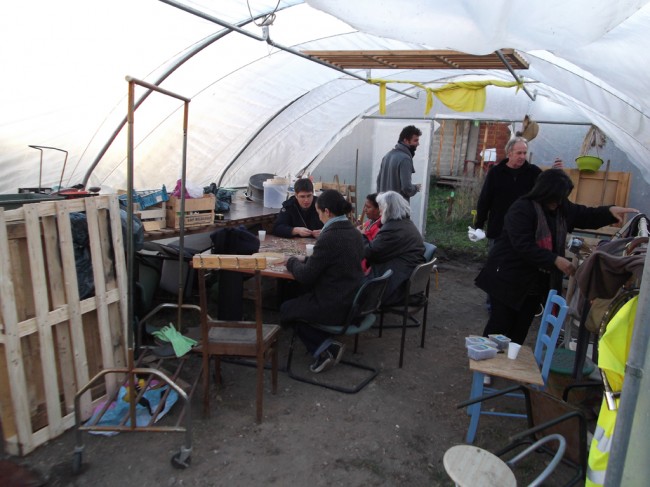
This Saturday, it was the second workshop session DIY in the greenhouse.
After the last large cleaning workshop, we now have room for a new layout!
We worked with the stock materials (bottom plot) that we collected in the surrounding areas during the year. It is basically reclaimed wood in various forms: different types of pallets, battens, wooden furniture recovered from the street …
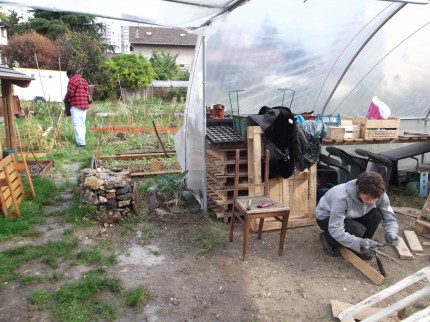
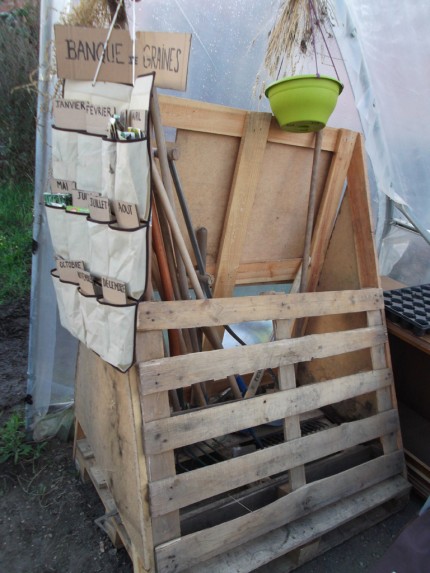
Thus, we have improved the high seedlings table to make it waterproof. We used a variety of glaziers (that is to say, designed to carry vertical windows) given by a neighboring company, O2 Seine Fenêtres, located avenue de Stalingrad, to build a storage for garden tools. A chair that would be discarded was repaired and modified with elements found in the stock: a drawer below the seat as small storage and a coat for children, which solidifies the broken case. Finally, a micro-stove was built of brick and mud, just in time to heat water for the mint tea!
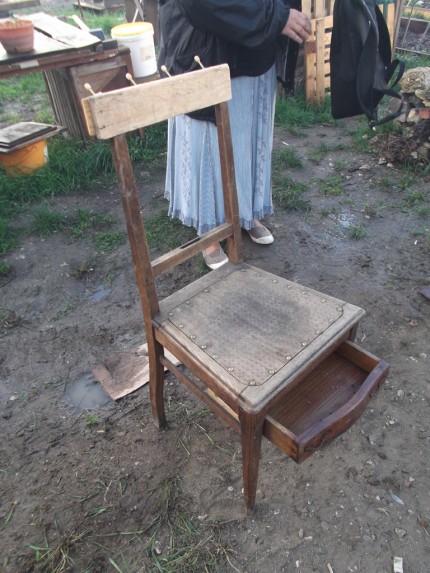
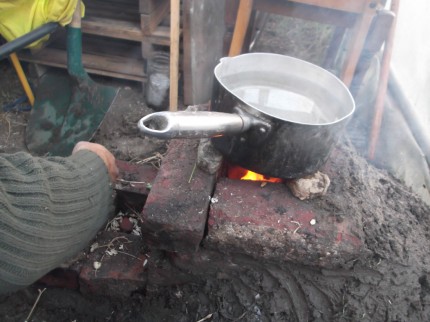
DIY workshop in the greenhouse 1/2
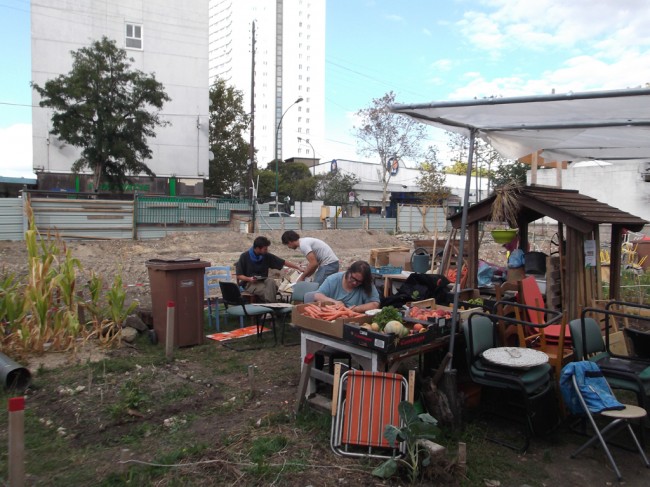
This Saturday, there was great commotion in and around the greenhouse.
At first we had to deal with the monumental harvest of fruits and vegetables from the Marcea and Asnières markets, made a few hours earlier by Fabrice, Adrian and Leo. At 13h, the time when the market closes, there is a lot of interesting waste for the garden: overripe fruit, unsold vegetable crates and cartons. The gardeners are bound to sort all this up: first the fruit still edible was set aside, so that everyone was able to take one. Some have recovered and dried seeds in anticipation of future planting. Finally, all that was damaged was divided between compost and vermicompost: worms in the worm farm were treated to a feast!
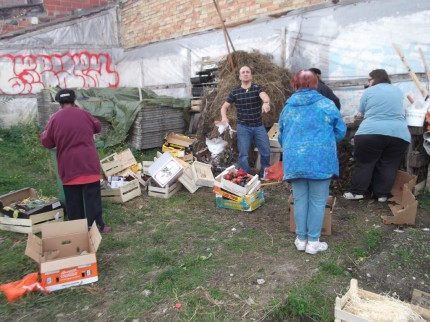
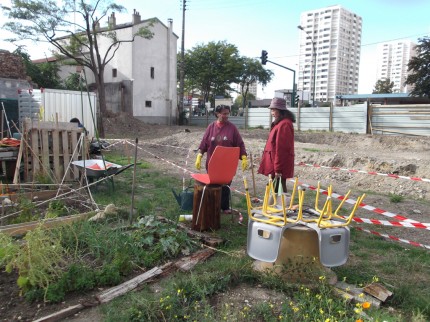
Then everyone got their hands in the dough to store the greenhouse. In fact, due to the approach of winter, it was about arranging this common store, so that everyone can make its seed and shelter when the weather is cold. Everyone has actively participated in the great Fall Cleaning: sorting, storage, washing furniture and weeding the soil. Thus, the greenhouse was completely emptied and refurbished: we built a large table and a micro-sowing seed bank. The development continues on Oct. 13, including storage shelves and a small warm seating area for this winter. Any idea is welcome!
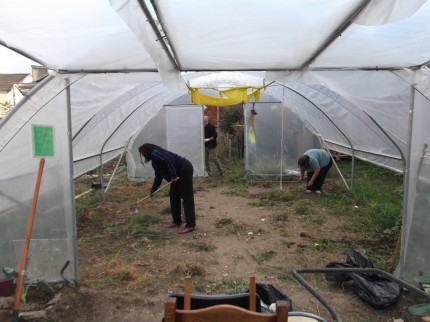
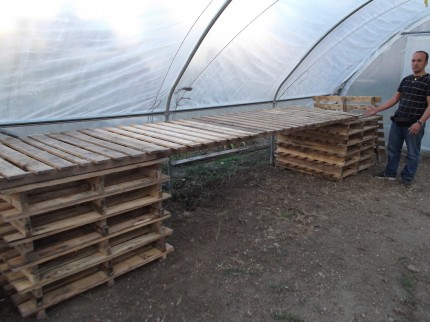
Restarting the Agrocité
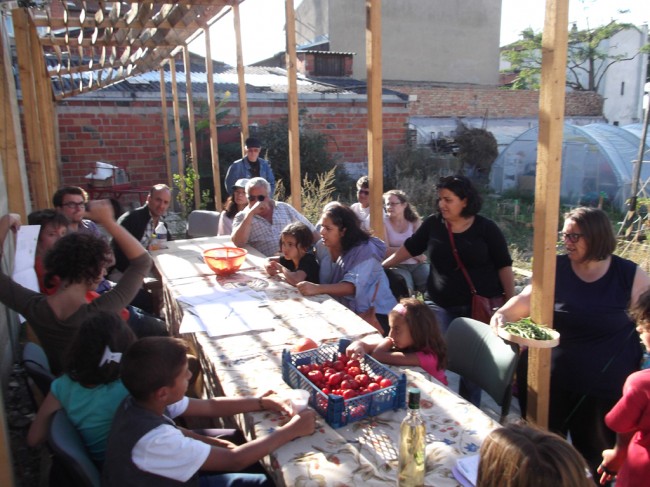
Many things happened during this month of August!
Already initiated by the workshops at the beginning of the summer, the Michelet garden layout went into high gear with the start of construction in the street front. For now, this is still a wide gap, but in early 2013, three small buildings connected by a greenhouse will be ready to host activities related to urban agriculture and local culture.
Many transformations deserved a little explanation! This Saturday, so we met to discuss the second season of the Michelet garden. Sara began by presenting the project, its operation and the new steps to be adopted during the construction period. Indeed, it is necessary for the good of all gardeners as well as construction workers, to respect the limits of the construction site, defined by the red ribbon. We were able to maintain restricted access to the garden during the work, but it is provided that each meets this safety rule. It was also an opportunity to explain the functioning of toilets, set up a micro-economy from the Agrolab (crops are weighed, labeled, and sold at a low price to the people).
We ended the day with delicious potatoes cooked on the barbecue in the garden.
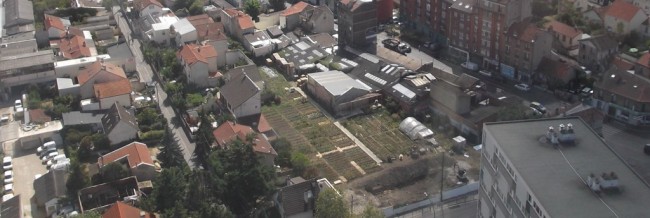
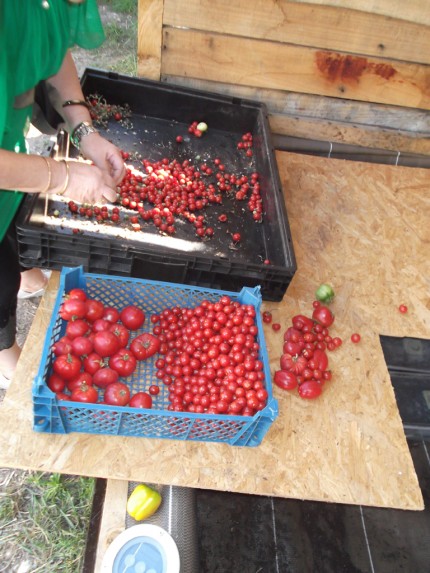
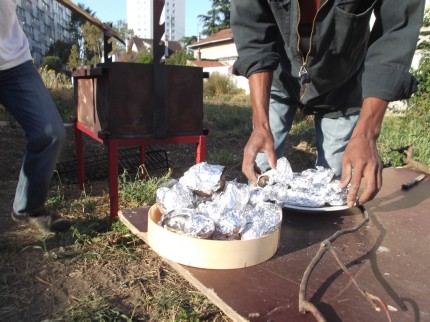
Gardeners Meeting

The 35 plots of the shared garden are all allocated, so it was time for all gardeners to meet and to discuss the management of the shared garden. Since that Saturday, that’s been done!
We had a nice time in the greenhouse, where each of gardeners showed up. Aaa was also present to relocate the shared garden and its actors in the wider strategy that is R-Urban . We were able to find solutions for the organization of irrigation, and the management of the keys. Thank you all for coming in great numbers!
Ground transplanting workshop
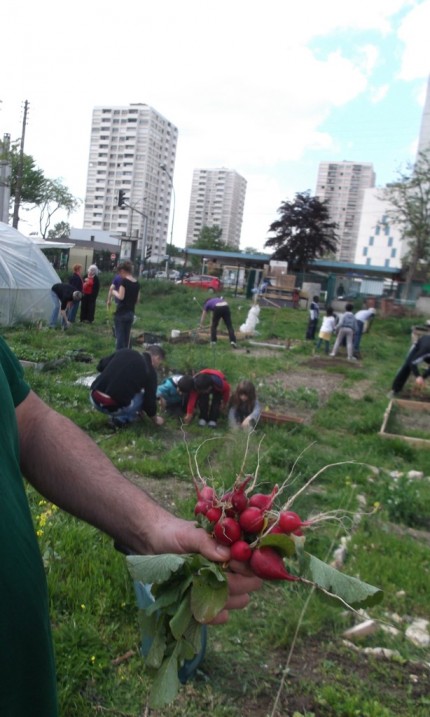
We enjoyed the beautiful weather this Saturday to make good progress on the plantations in the Agrolab. There are now three parcels of 12x4m fully planted. The pole beans of Soissons, who had already reached a considerable height and felt quite cramped in their small pots, were transplanted in the ground. Helped by the people, we have fabricated bamboo structures to stake the beans. We took advantage of the space inside the “V” formed by the structure to plant potatoes and test a form of crop intensification. Plots 2 and 3 are mostly planted in potatoes (Ratte and vitelotte): so we can expect a good harvest in the fall. Also on the menu this Saturday plantations: marmande tomatoes, sweet peppers of the Landes, the giant Italian parsley, white chard and celeriac.
As for the shared garden, it really takes shape thanks to the people who come every Saturday gardening their plots. William was the first harvest of the garden plot on his Michelet: fine (and good) radishes!
A waiting list was opened for the allocation of plots, for all those that have been run are now occupied.
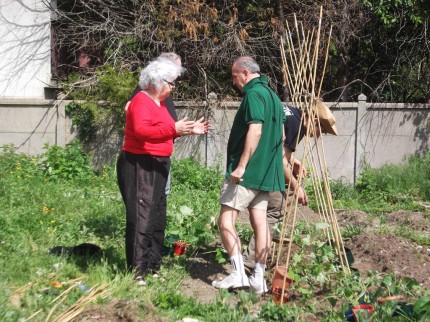
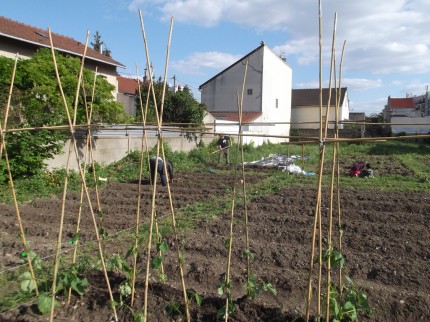
Prototype for a Vertical Hydroponic Garden
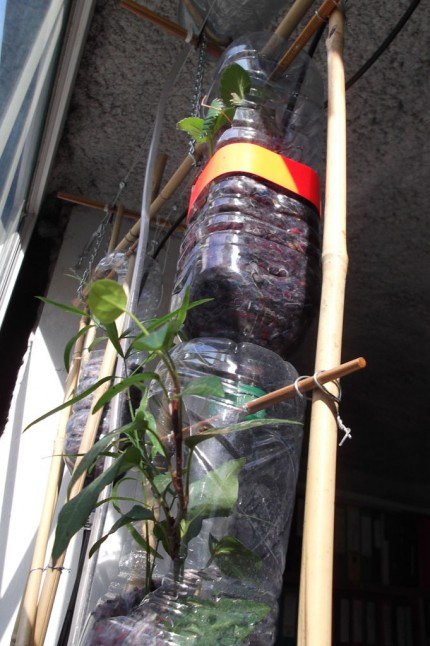
During the last few weeks we explored the various possible techniques to develop a vertical garden that could grow into a small space of the house: the window. We arrived first at the solution of hydroponics (earthless agriculture), which is growing plants performed on neutral and inert substrate (such as sand, pozzolana, clay pebbles, rockwool etc.. ). This substrate is irrigated regularly with a liquid stream that brings minerals and nutrients to the plant. This technique are widely used for market gardening.
Then, our research led us to the “window farming”, which is the latest evolution in sustainable food production in a closed cycle. This movement, initiated by newyorker Britta Riley, is a way to produce food using a simple but very effective method in urban environments. We added a biological filter to the original scheme, which can purify the water but also to enrich the nutrients needed by plants for their growth.
All the elements that make up our system are salvage or readily available (including the pump and timer which can be found in any garden shop or DIY): plastic bottles that serve as pots for plants , bamboo chopsticks, all connected with wire to the structure and a plastic container for the filter.
If you want to build one, you can find all the details in the section Local Products Site: Vertical Hydroponic Garden
